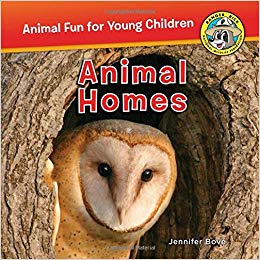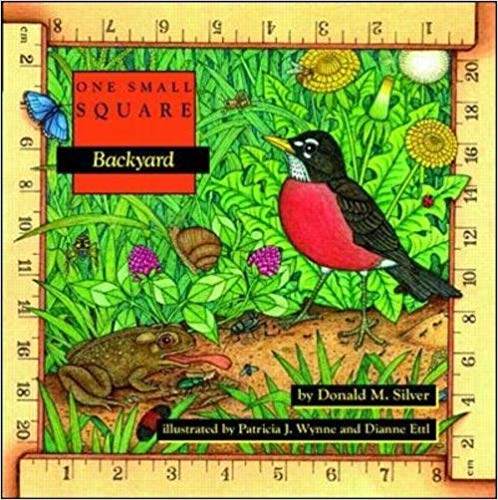OC Field Investigation Activity: Critter Characteristics & Habitats OLD
In this activity, students look for a bird, insect, amphibian, reptile or mammal in the outdoor classroom, record its features, and then describe its habitat. Afterwards, they discuss how and why different animals were found in different places in the outdoor classroom.
STEP 1: Engage through Discussion
The background information and example questions below can be used to help introduce the topic, engage the students, and build a foundation to discuss the topic:
STEP 2: Explore with Literature
This book can be used to further explore the topic with your students:
STEP 3: Explain using Technology
These videos can be used to further explain the topic to your students:
STEP 4: Investigate through Journaling
The Outdoor Classroom Field Investigation Activity Observation Sheet(s) allow students to apply what they have learned as they investigate and record their real-world observations in their field journals. Before you go outside, don't forget to review the activity instructions and your Outdoor Classroom Rules with your students:
STEP 5: Review with an Assessment
Review and assess the students’ observations and answers on their observation pages. Another extension might be to have students select an animal from a field journal or assign the students a specific animal, and then have them complete the observation pages as an assessment for that species. You can also use the Questions & Answers Interactive Powerpoint to review the material. .
- Lesson Plan & Resources for Teachers: Use the interactive STEPS below... OR... Print them as a PDF
- Outdoor Classroom Field Investigation Activity Sheets for Students:
- Outdoor Classroom Field Investigation Answer Sheets for Teachers: (version 2) Word Doc can be edited | PDF ready "as is"
- Materials Needed: Copies of field identification guides such as the National Audubon Society Field Guide to the Southeastern States, ~25 Copies of the "Critter Characteristics & Habitats" Field Investigation Activity Sheets, 25 Clipboards, 25 Pencils, and Magnifying Glasses (Optional: spades for digging)
- Duration: Introduction - 30 min. | Outdoor Exploration - 30 min. | Review - 30 min.
- Alabama Course of Study Standards Taught: PDF
STEP 1: Engage through Discussion
The background information and example questions below can be used to help introduce the topic, engage the students, and build a foundation to discuss the topic:
- Background Info: (Word Doc | PDF)
- Example Questions & Answers (Word Doc | PDF | Interactive PPT) - If you use the PowerPoint (PPT), be sure to click "Slide Show" & "From Beginning" to display questions and answers separately.

STEP 2: Explore with Literature
This book can be used to further explore the topic with your students:
- Animal Homes (Ranger Rick: Animal Fun for Young Children) by Jennifer Bove' (ISBN: 978-1630762247)
- One Small Square: Backyard by Donald M. Silver (ISBN: 978-0070579309)

- One Small Square: Woods by Donald M. Silver (ISBN: 978-0070579330)
- One Small Square: Swamp by Donald M. Silver (ISBN: 978-0070579262)
- One Small Square: Pond by Donald M. Silver (ISBN: 978-0070579323)
- Animal Habitats (My Science Library, Levels 1-2) by Julie K. Lundgren (ISBN: 978-1617419348)
These videos can be used to further explain the topic to your students:
- Animal Classification YouTube Video (6:51 min) @ https://www.youtube.com/watch?v=mRidGna-V4E
- Animal Classification Brain Pop Jr. Video (5:48 min) @ https://jr.brainpop.com/science/animals/classifyinganimals/
- What is a Habitat? Video (2:56 min) @ https://www.youtube.com/watch?v=CxrlEajA398
- Nature: Animal Homes PBS Learning Media Video (2:07 min) @ https://www.pbslearningmedia.org/resource/nat15.sci.lisci.anihome/habitat-animal-homes/#.W3R81ehKg2w
The Outdoor Classroom Field Investigation Activity Observation Sheet(s) allow students to apply what they have learned as they investigate and record their real-world observations in their field journals. Before you go outside, don't forget to review the activity instructions and your Outdoor Classroom Rules with your students:
- Critter Characteristics & Habitats Activity Tip - Before taking the students outdoors to explore the outdoor classroom, consider splitting them into groups of three and ask each group to look for a specific type of animal (bird, mammal, amphibian, reptile, fish, insect, worm or other invertebrate). This will help ensure that your students observe a wide variety of animals and not just insects (which will be the easiest type of animal to find). Also, by dividing your students in groups of three, one child can hold the clipboard and record the observations on the Field Investigation page, one child can hold the magnifying glass to view the details of the animal, and one child can collect and hold the specimen in the container (a petri dish, glass vial or Ziploc bag). Once the students have recorded their observations, they can then release the animal back into its original habitat. Optional: Use an iPad, smartphone or camera to take photos of animal found in the outdoor classroom.
- Activity Instructions for Critter Characteristics & Habitats Activity Sheet(s) - Have students explore your outdoor classroom and look for an animal (wildlife). Complete the questions to help you describe what type of animal it is and its habitat needs. Use field identification guides like the National Audubon Society Guide to the Southeastern States or safe internet sites like the Alabama Department of Conservation and Natural Resources’ Watchable Wildlife to help you answer the questions, if needed.
- Activity Answer Sheets for Teachers - (version 2) Word Doc can be edited | PDF ready "as is"
Wildlife Identification Tips – Use the National Audubon Society Field Guide to the Southeast or other similar field guides to help the students identify the animal(s) they found. Also, you can use the Alabama Department of Conservation and Natural Resources’ Outdoor Alabama Watchable Wildlife website to assist you with the identification of local native wildlife.
- Example Outdoor Classroom Rules - The outdoor classroom is not a playground, so do not run and do not climb on anything. Remember that the outdoor classroom provides habitat (a home) for local wildlife, and you should not damage the local wildlife habitat. Therefore, do not pick up wildlife, plants, flowers or rocks unless you are collecting a specimen for the activity. Also, do not feed wildlife.
STEP 5: Review with an Assessment
Review and assess the students’ observations and answers on their observation pages. Another extension might be to have students select an animal from a field journal or assign the students a specific animal, and then have them complete the observation pages as an assessment for that species. You can also use the Questions & Answers Interactive Powerpoint to review the material. .
 Wildlife Tag
Wildlife Tag